
Chess notation is a system to document chess games, based on coordinates. I teach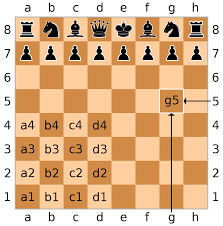 beginners board geography before piece movement. This allows a student to say “e4”, rather than “move the fifth pawn from the left side two squares.”
beginners board geography before piece movement. This allows a student to say “e4”, rather than “move the fifth pawn from the left side two squares.”
A chess board has 64 squares. There are three different types of lines on the board: files, ranks and diagonals:
- Files: the columns that all have letters, from “a” to “h”.
- Ranks: the rows that all have numbers, from “1” to “8”.
- Diagonals: slanted lines of the board, can be specified by the first and last square (i.e, “a1-h8”)
To name a chess square, you write the letter of the file and then the number of the rank. For instance, in the beginning of a chess game, the white queen starts on “d1”.
Next you need to the know the symbols of the pieces: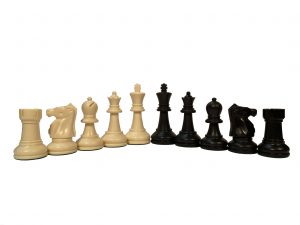
- Pawn: No Symbol
- Bishop: B
- Knight: N (“K”is reserved for the more important piece that starts with the same letter.)
- King: K
- Queen: Q
- Rook: R
To write a chess move, you always need to write down three items:
A) Piece B) File C) Rank
The piece symbol should be capatalized and the file letter should be lowercase.
For a pawn move, you just write down the name of the square (file and rank).
One just needs to write down the name of the square a piece is going to, not where it came from. However, occasionally there will be times when two pieces of the same type can go to to the same square. In that case you need to specific which file or rank the piece came from. For instance, in this case, to write down a rook move by white, one needs to write down either “Rfe1” or “Rae1″:
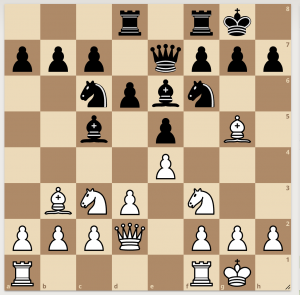
Lastly one needs to know the ‘special symbols’:
Captures: x
Check: +
Checkmate: ++ or #
Castling: 0-0 for kingside or 0-0-0 for queenside
On a scoresheet, there is three parts: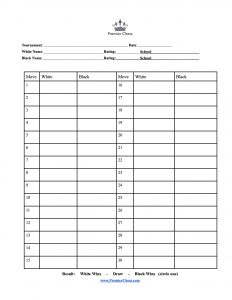
- Header with game information: players, date, tournament name, Etc. I always recommend students fill out the information its entirety.
- White Column on Left Side: All White moves go here
- Black Column on Right Side: All Black moves go here
One common mistake beginners will do is only writing down their moves and not their opponents. Of course it’s hard to review a game afterward if only half of the moves played in the game are written down.
To avoid falling behind in notation, the first step of our thought process is to write down your opponent’s move, before starting to consider your move. Then you should write down your move right after playing it.
That said, if one does ever fall behind in notation, he could either ask borrow his opponent’s scoresheet or skip a line and continue notating from there.
There are four main reasons it is important to understand notation:
- By notating, players automatically slow down and make better moves. Several years ago I was coaching a student at the Nationals and won a trophy with 5-2 score. For the five games he won, his notation was perfect. For the two games he lost, his notation was undecipherable.
- Notation serves as a player’s proof; one can not make many claims, like a win on time in a non-sudden death time control, three-fold repetition, 50-move rule, etc. without proper notation.
- It is important to notate and learn from one’s games. I have read very few chess books cover-to-cover in my life, most of which I discussed in this blog post. However, I have played in 977+ tournaments and have analyzed every one of my games.
- Without a knowledge of chess notation, it is impossible to read chess
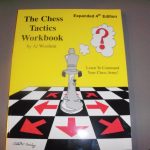 books. It is worth noting that I described algebraic notation in this post, which is used by 90%+ of chess players and 100% of authors today. Some old-school players use descriptive notation, which you will need to know if you want to read some old out-of-print books.
books. It is worth noting that I described algebraic notation in this post, which is used by 90%+ of chess players and 100% of authors today. Some old-school players use descriptive notation, which you will need to know if you want to read some old out-of-print books.
Knowing chess notation is essentially as important as understanding piece movement; it’s part of the ‘ABCs’ of chess. Read this blog post, practice notating a few games and you will soon become an expert at it and ready to improve in chess.


 Both
Both
This is really refreshing to read!! Woow
Thanks for your good content
This is really refreshing to read!!
The software says exclusively relevant. Each of reduced attributes happen to be formulated with various capture certification. I like the application many.
This approach is visually really most suitable. Every single one of microscopic highlights are intended by means of a number of heritage skills. I recommend the software quite a lot
What are the fundamental concepts discussed in the article “Back to Basics: Notation”?
Become a legend in our fantasy world!
On a purely aesthetic level, this method works best. Several inherited abilities are responsible for each and every one of the microscopic highlights. The software is highly recommended by me.
选择我们的留学生作业代写服务,不仅可以帮你节省时间和精力,还能帮助你提高学术表现,轻松应对各种学术挑战。我们承诺提供及时、高效、保密的服务,全程为你保驾护航,确保你能按时提交高质量的作业。无论你身处哪个国家,我们都可以为你提供个性化的解决方案,让你的留学生活更加轻松自如。
بهترین آموزشگاه حسابداری در کرمان با مدرک معتبر
Thank you for the useful information that I rarely find on the sites
I have benefited a lot from this information
Thank you for the useful information that I rarely find on the sites
I have benefited a lot from this information
Every interaction reflects a deep understanding of the field, resulting in consistently high-quality and effective solutions.구글찌라시 This provider’s attention to detail and high standards guarantee a premium experience and exceptional results every time.
My experience with Cricbet99 has been exceptional! The site is easy to navigate, and the Cricbet99 Login is fast and secure. With the Cricbet99 App, I can follow live action and stay connected anytime I want. The platform runs smoothly with no interruptions, making the whole journey enjoyable and effortless. Cricbet99 really delivers on speed and reliability.